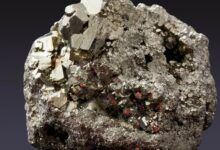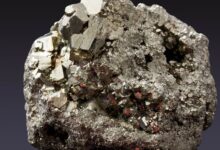
How we can rehabilitate legacy mines with proven approaches
Shameer Hareeparsad, Director: Geochemistry, WSP in Africa
South Africa has a long and rich history of mining and has some of the best expertise in the world in applications like coal mining, amongst others. While mining activities have significantly contributed to the development and growth of the country’s economy and its position as a hub on the continent, the legacy of mining across the country presents a growing liability.
There are several recent examples of historic underground mines that are creating new hazards in today’s environment and impacting both water systems and terrestrial ecosystems. Legacy mines were typically closed to the standards of the day, with little to no consideration for future changes in surface conditions, climate or development. Because South Africa is a prolific mining player on the continent, and has been for centuries, the country has many mine sites that are poised to pose a variety of problems, ranging from seepage and mine drainage outflows to structural failures.
These different problems have four factors in common. Firstly, they will continue to deteriorate over time. Secondly, they are addressed by temporary measures. Thirdly, the risk and liability they present will also continue to grow. Fourthly, they will result in large expenditures.
Finding the right way to treat the problem of legacy mines presents a challenge. Typically, water treatment is used to manage output from decant (water discharge), but this is only a temporary management tool, not a solution. This approach also has its own complications, such as brine management and long-term storage of sludge, which just creates two additional waste streams that require management forever. However, not treating historic mines invariably presents unexpected problems down the line.
A recent WSP case study on a closed coal mine located in Kwa-Zulu Natal presents a prime example of a historic mine that is now presenting problems. Exploration and drilling at the site of this mine date back to 1896. The mineral rights were purchased by the current owner in 1954 and the mine operated for nearly 50-years before being closed in 2000, where the pumping of water from underground ceased. The site spans approximately 69 km2 and its depth is approximately 250 m below the surface.
While the coal mine has been closed for more than 20-years our 2024 study revealed that it has decant emanating from the underground in unexpected locations – and not at specific locations associated with old entries/shafts reporting to surface. The mine is relatively deep and there is no access to the underground anymore, and the mine plans that are available are not comprehensive.
There is also no existing infrastructure on the surface but there are additional closure activities happening around capping the fines disposal areas which are far removed from the decant areas. The decant areas are on the surface; these areas are not designed for or permitted to have discharge locations. The source of the decant is not clear – other than it is coming from the flooded underground – and there are many potential pathways that could be fuelling the decant.
This poses a critical question; how do we responsibly – and most effectively – rehabilitate legacy mines such as this? Fortunately, the technology to rehabilitate legacy mines has advanced considerably over the past several years. Paste technology offers a viable solution for rehabilitating seepage, as it involves creating high-density, low-moisture mixtures of solid materials and liquids. These pastes are fluid enough to be pumped but stiff enough to be stable after placement.
Furthermore, paste technology offers environmental and economic benefits. It can reduce the risk of particle segregation; improve the stability of deposited tailings; eliminate the pond on top of tailings deposits and potentially lower overall costs. Additionally, mixing paste with cement is used to create Cemented Paste Backfill (CPB), which can refill mined areas. This improves extraction rates and enhances ground stability.
WSP undertook a project to address the aforementioned coal mine, which afforded us the opportunity to consider two possible solutions to address a historic mine and remediate leakage. The first phase of the project entailed examining the possibility of injecting the brine products from the temporary water treatment system back into the underground.
Although the exact injection rate has not yet been determined – which will become clear in the next phase of the project and once the water treatment plant has been commissioned and is operational – the brine itself is known to have high salinity with elevated levels of total dissolved solids (TDS), sulphates, and chlorides. Another solution we are looking at is using paste backfill to plug the preferential pathways to eliminate decant production.
For the brine storage component, initial assessments indicate that underground voids could serve as a viable short-term containment solution. While there are risks around volume capacity, migration potential and geochemical interactions, these can be managed with targeted monitoring and mitigation measures.
At this stage of the project, it is clear that the use of paste backfills to plug preferential pathways to reduce or eliminate the decant from the underground is a better option. This would allow for reduction or elimination of the water treatment step, which is a long-term cost and liability. There is additional work to be done as part of the next phase of the project and to fully assess the option, but currently no fatal flaw exists to rule out using paste backfill.
This project illustrates that paste technology offers a genuine solution to the need to address historic mines. More importantly, it illustrates that even as historic mines can pose challenges, there are workable solutions. Clearly, we cannot undo the reality of South Africa’s many historic mines, which means that rehabilitating these sites using the technologies available is something that the country must address, one way or another. It is our responsibility to mitigate the environmental impacts of historical mining activities, ensuring that future generations are not burdened by ecological harm or degradation. By addressing the legacy of our mining past, we better safeguard a sustainable future for those who come after us.
Shameer Hareeparsad, Director: Geochemistry, WSP in Africa, and colleague Sue Longo, Principal Engineer, WSP in Canada, jointly presented their paper titled, “Rehabilitation of a historic mine with sudden seepage” at Paste 2025 – the 27th International Conference on Paste, Thickened and Filtered Tailings that took place 8–10 April 2025 in Namibia.
About WSP
WSP is one of the world’s leading professional services firms, uniting its engineering, advisory and science-based expertise to shape communities to advance humanity. From local beginnings to a globe-spanning presence today, WSP operates in over 50 countries and employs approximately 73,000 professionals, known as Visioneers. Together they pioneer solutions and deliver innovative projects across sectors: Transportation & Infrastructure, Property & Buildings, Earth & Environment, Water, Power & Energy and Mining & Metals. WSP is publicly listed on the Toronto Stock Exchange (TSX:WSP).
